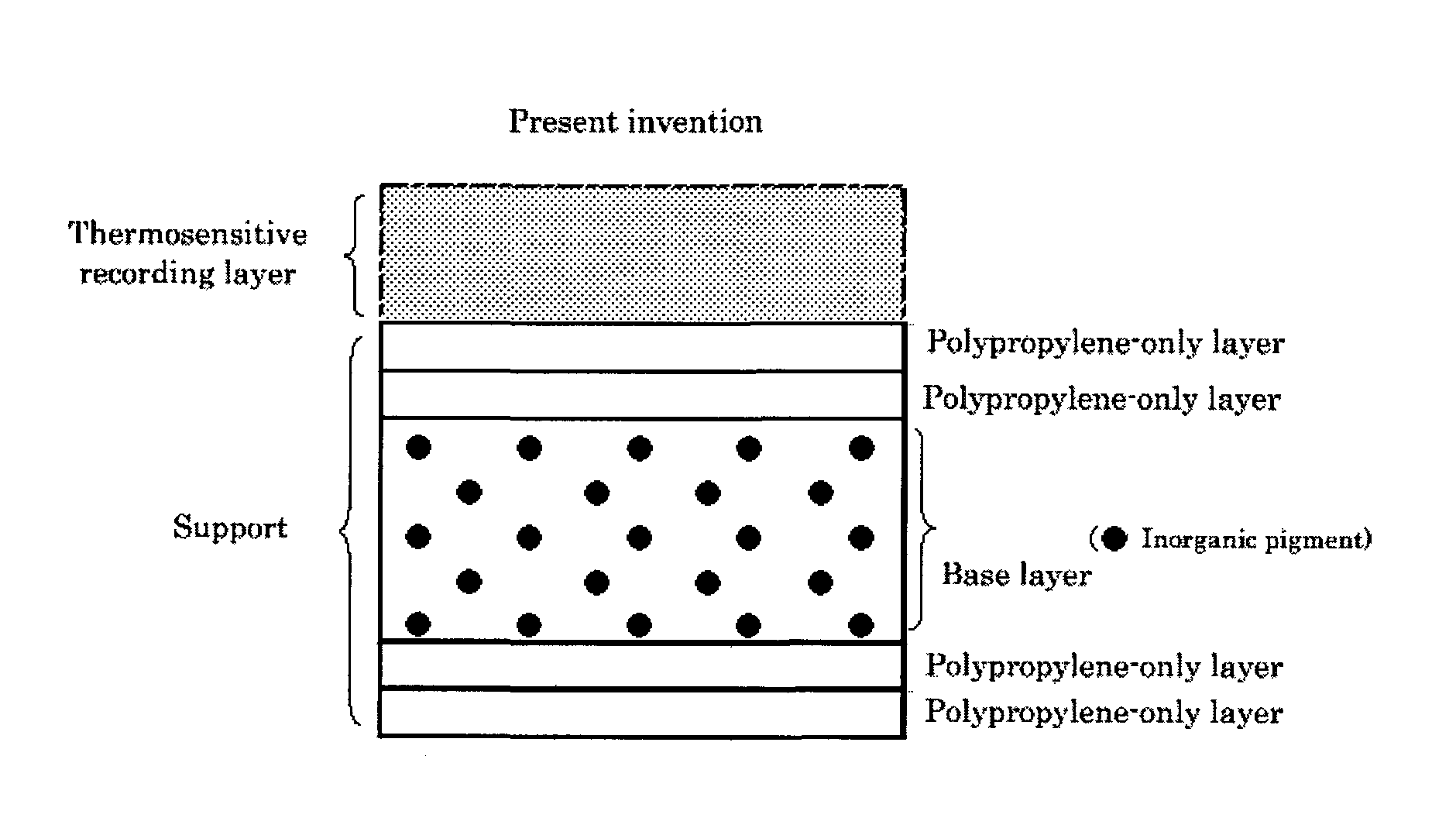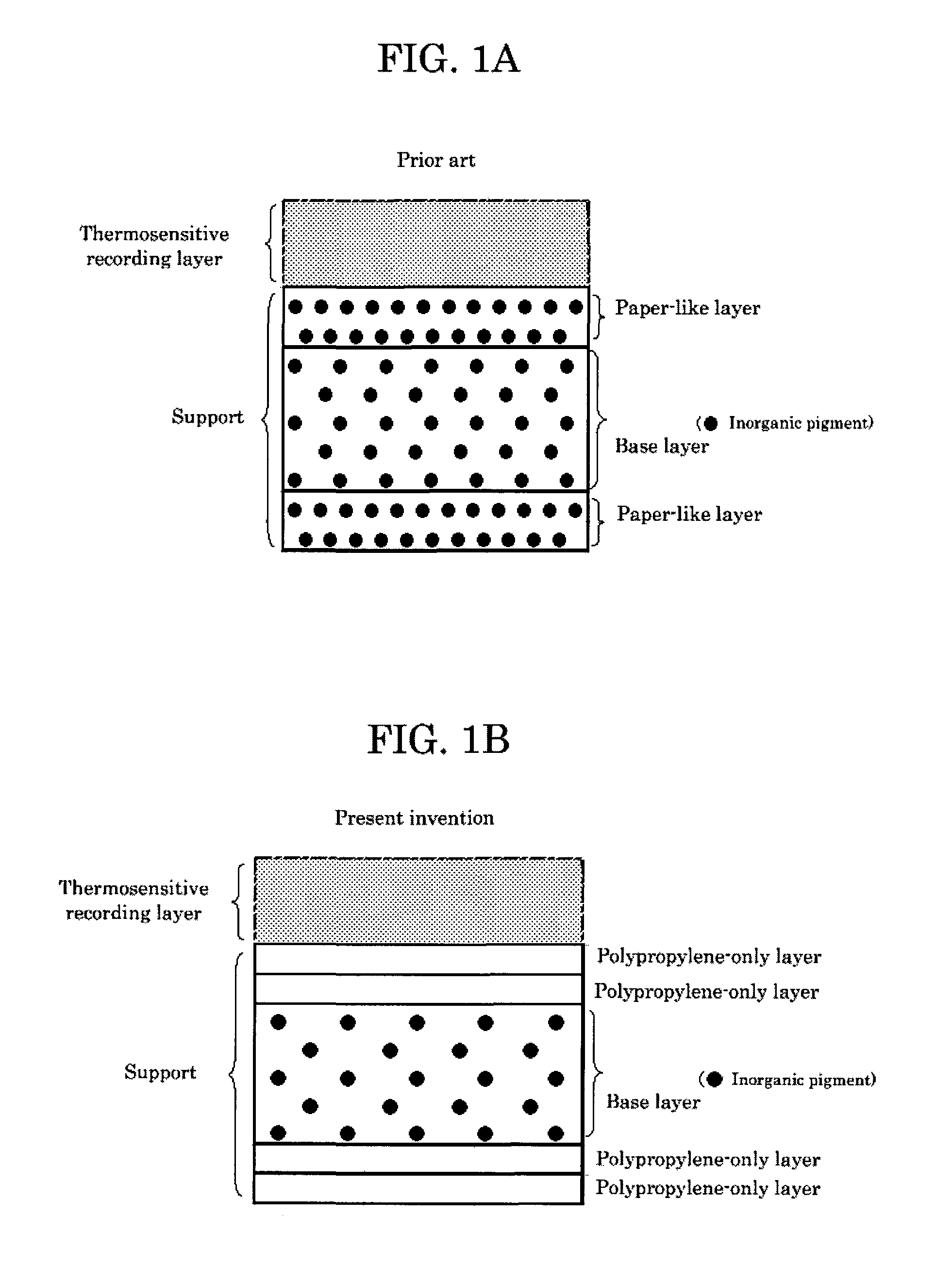Thermosensitive recording material and recording method using the same
a technology of thermosensitive recording media and recording method, which is applied in the direction of duplicating/marking methods, thermography, printing, etc., can solve the problems of unsuitable height for supporting thermosensitive recording media, reduced uniformity, and curvature, and achieves superior uniformity, less curling, and high gloss.
- Summary
- Abstract
- Description
- Claims
- Application Information
AI Technical Summary
Benefits of technology
Problems solved by technology
Method used
Image
Examples
example 1
(1) Base Film A
[0125]The base film used was a five-layer synthetic paper formed of (i) and (ii) below, and the base film was 188 μm±5 μm in thickness, 95% in surface glossiness, 11,000 sec in smoothness, and 400 mg (MD) and 600 mg (CD) in rigidity.
[0126](i) Base layer: a layer of 178 μm in thickness formed by biaxially stretching a composition composed of 95% of polypropylene and 5% of calcium carbonate of 1 μm in average particle diameter was made a base layer.
[0127](ii) Front surface layer: a film of 2 μm in thickness formed by biaxially stretching polypropylene and a film of 3 μm in thickness formed by biaxially stretching polypropylene were laid one on top of the other on the base layer to yield a front surface layer of a two-layer structure. Also, a layer having the same structure as that of the front surface layer was formed on the back surface of the base layer.
(2) Preparation of Thermosensitive Recording Layer Coating Solution
[A Solution] Preparation of Dye Dispersion Soluti...
example 2
[0135]A sample of Example 2 was produced in the same manner as the one in Example 1, except that a thermosensitive recording layer solution [C2 solution] derived from the [A solution] and the [B solution] which were prepared so as to become 1.0 μm in average particle diameter was used. On this occasion, the surface glossiness of a thermosensitive recording layer B was 43%, and the top layer surface glossiness of the sample of Example 2 was 78%.
example 3
(5) Preparation of Back Layer Coating Solution
[G Solution] Back Layer Solution
[0136]
water:45parts10% aqueous solution of polyvinyl alcohol:40partssilica (P527 produced by Mizusawa Industrial Chemicals,1partLtd.):antistatic agent (CHEMISTAT KM-7005):10partspolyamide epichlorohydrin (paper strength agent WS-525,4parts25%):
[0137][G solution] was applied onto the back surface side of the sample of Example 1 and dried to form a back layer of 4 g / m2 in thickness, and a sample of Example 2 was thus produced.
PUM
| Property | Measurement | Unit |
|---|---|---|
| average particle diameter | aaaaa | aaaaa |
| Ra | aaaaa | aaaaa |
| density | aaaaa | aaaaa |
Abstract
Description
Claims
Application Information
 Login to View More
Login to View More - R&D
- Intellectual Property
- Life Sciences
- Materials
- Tech Scout
- Unparalleled Data Quality
- Higher Quality Content
- 60% Fewer Hallucinations
Browse by: Latest US Patents, China's latest patents, Technical Efficacy Thesaurus, Application Domain, Technology Topic, Popular Technical Reports.
© 2025 PatSnap. All rights reserved.Legal|Privacy policy|Modern Slavery Act Transparency Statement|Sitemap|About US| Contact US: help@patsnap.com


